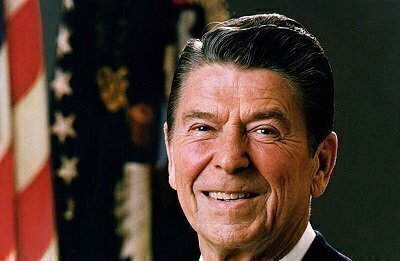The Reagan era of the 1980s is often remembered for the President’s pursuit of ending the Cold War and his legacy as the “Great Communicator.” But Reagan’s impact on the Supreme Court was also significant and still relevant today.
 During his eight years in office, President Reagan elevated a Chief Justice, had three nominations confirmed, one rejected and another nominee withdrawn from consideration in the Senate.
During his eight years in office, President Reagan elevated a Chief Justice, had three nominations confirmed, one rejected and another nominee withdrawn from consideration in the Senate.
Reagan had signaled a desire to have an influence on the Court during the 1980 presidential campaign, and few will dispute that he did shape the Court’s future through his appointments.
The candidate said he would appoint a woman to the Supreme Court, and he also pledged to reverse the Roe v. Wade decision and any court decision that barred prayers in public schools.
President Reagan made good on his first promise when he nominated Arizona judge Sandra Day O’Connor to the Supreme Court. Reagan personally vouched that O’Connor’s views on abortion would be acceptable to conservatives.
O’Connor was unanimously approved by the Senate in a 99-0 vote on September 21, 1981, with one absent senator personally apologizing to the justice for not being present for the vote.
The rest of Reagan’s history with the Senate nomination process and the Supreme Court wasn’t as smooth. The President then decided to elevate a conservative Justice, William Rehnquist, to the position of Chief Justice in 1986 when Warren Burger retired. Rehnquist overcame liberal opposition in the Senate, and was appointed with a 65-33 vote.
Reagan’s next nomination came when he had to replace Rehnquist as an associate justice and he had two candidates to consider: Robert Bork and Antonin Scalia. He had put both judges on the District Of Columbia Circuit Appeals Court.
After the political debate over Rehnquist elevation to Chief Justice, there was much less political attention given to the eventual nominee: Scalia. Scalia, like O’Connor, received a unanimous confirmation to the Court on the same day that Rehnquist’s elevation was approved, despite having a more conservative record than Rehnquist.
But with the retirement of Lewis Powell in 1987, Reagan faced his biggest challenge with the Senate over Supreme Court nominations. His final candidates included Bork and Senator Orrin Hatch. A constitutional provision about pay raises given by the Senate to Justices became a barrier to any Hatch nomination. So on July 1, 1987, Reagan said he would nominate Bork to replace Justice Powell. A firestorm soon erupted as Senate Democrats, led by Ted Kennedy, attacked Bork’s position on legal matters they opposed. The Democrats also controlled the majority of the 100th Congress, and on October 23, 1987, Bork’s nomination was rejected by a 58-42 vote.
His nomination was one of only four rejected by a Senate vote in the 20th Century.
Reagan’s next nomination was a more moderate conservative, Douglas Ginsburg, but a controversy over Ginsburg’s marijuana use led to the judge withdrawing his name before he could be formally nominated. Reagan then turned to a federal judge from the Ninth Circuit who had been appointed by Gerald Ford: Anthony Kennedy. Reagan knew Kennedy from Reagan’s days as California’s governor.
Reagan went to bat for the nominee when questions arose from conservatives about Kennedy’s views on privacy matters. Kennedy was unanimously approved by the Senate after the failed Bork and Ginsburg nomination attempts.
Few would argue about the impact that the Reagan appointees had the Court in the following years. O’Connor was viewed as a key swing vote on the Court until her retirement in 2006. Today, Kennedy is portrayed as the swing vote on many key issues. Scalia’s legacy as a conservative voice on the Court is well-known; Rehnquist is also seen as a key figure in what are viewed as conservative-leaning decisions during his tenure as Chief Justice.






